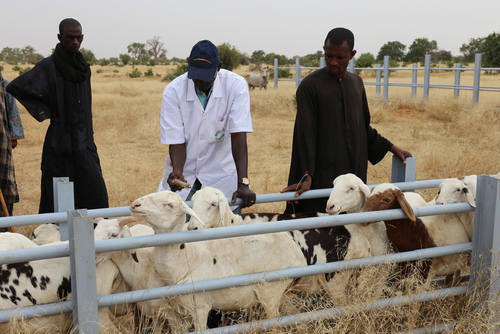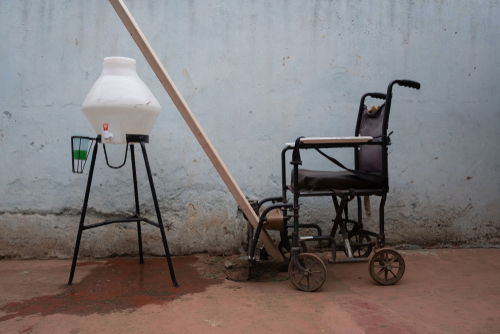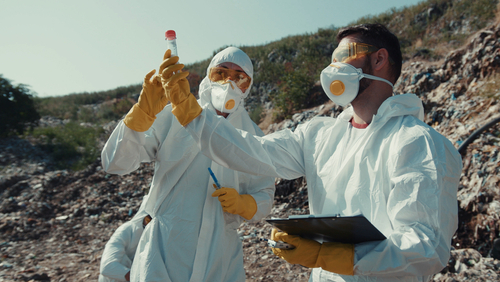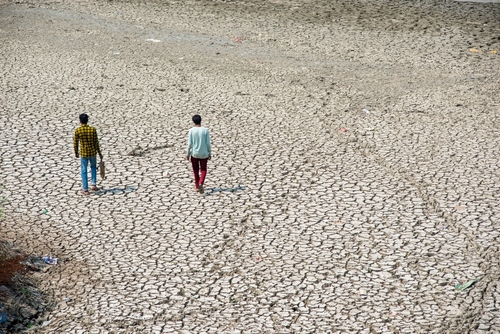February 26, 2024

Estimating the cost of care for Alzheimer’s disease and related dementias in the United States
One Health Trust researcher Dr. Arindam Nandi co-authored a study that found that the formal cost of care per patient for Alzheimer’s disease and related dementias (ADRDs) in 2016 in the United States was US$28,078 (95% confidence interval: $25,893-$30,433). Using national longitudinal data from the United States Health and Retirement Survey (2010-2016), the researchers estimated that Americans spent an estimated US$196 billion (95% uncertainty range: $179-$213 billion) on direct medical costs for ADRDs in 2020. This value was projected to increase to US$1.4 trillion (95% UR: $837 billion-$2.2 trillion) by 2060, assuming an unchanged growth rate of ADRD prevalence. [npj aging]
Nigeria’s National Action Plan on Antimicrobial Resistance 2.0
OHT’s Dr. Oluwatosin Ajayi wrote a blog about her experience representing the One Health Trust at a stakeholder workshop on the development of Nigeria’s second National Action Plan (NAP) on Antimicrobial Resistance (AMR), based on findings from the OHT-supported evaluation of the country’s first NAP. Dr. Ajayi provided feedback on the strategic objectives of the NAP priorities and worked with other stakeholders at the workshop to develop interventions, operational plans, and progress indicators for the various research priority focus areas of the NAP, which include infection prevention and control; biosecurity; and water, sanitation, and hygiene measures. [One Health Trust]
Limited AMR surveillance in Africa challenges mitigation strategies.
A systematic literature review found that a lack of legislation on antibiotic use, close contact between humans and animals, and poverty are key drivers of the high incidence rates of AMR in Africa. The capacity for AMR surveillance in Africa is also limited and only some countries have implemented surveillance and other AMR mitigation efforts. In Angola, communicable diseases, including multidrug-resistant tuberculosis, account for more than 50 percent of deaths, but the national health plan does not mention AMR, and national surveillance data is not consistently reported to international data platforms. A One Health approach to AMR control, particularly surveillance-based methods, is critical to reducing the burden of resistance in Angola and other African countries. [One Health]
Disrupted health and sanitation systems in Gaza cause infectious disease outbreaks.
Several reports of drug-resistant bacteria, including resistant strains of Klebsiella and Escherichia coli and methicillin-resistant Staphylococcus aureus, have emerged during the war in Gaza. Due to severe overcrowding in shelters and disrupted health and sanitation systems, infectious disease outbreaks in internally displaced person shelters threaten the nutrition and lives of Palestinians, particularly children under five. Reactivated water wells and treatment plants, basic infection control techniques, and adequate nutritional provision are all needed to stem the spread of disease in Gaza and mitigate further mortality among Palestinians. [PLOS Global Public Health]
Human rabies cases in Ethiopia increased between 2018 and 2022.
A retrospective study analyzed national rabies data in Ethiopia, where rabies is endemic, and observed a substantial increase in suspected human exposure cases from 5,217 in 2018 to 11,298 in 2022. This rise in reported human cases could be due to increased healthcare-seeking behaviors by exposed individuals or higher animal cases among Ethiopia’s growing stray and free-roaming dog population. Regional veterinary clinics are limited in their capacity to test dogs for rabies, representing a major gap in national rabies surveillance and underestimating the true burden of canine rabies in Ethiopia. [One Health Advances]
Changes in living conditions for Thai indigenous people could affect zoonotic disease emergence and spread.
A qualitative study of the Mani ethnic group in Manang District, Thailand revealed that the once-nomadic group of indigenous hunter-gatherers has been increasingly limited in mobility due to the acquisition of national identification cards and more regular school attendance by their children. Mani participants also reported engaging in hunting animals for livelihood and consumption, possibly exposing them to zoonotic pathogens in meat and live animals. A lack of awareness about zoonotic diseases, communication barriers, and distance to healthcare facilities pose challenges to the Mani people’s utilization of the Thai healthcare system and zoonotic disease mitigation. [One Health]
Preventing HPV among women in the Colombian Amazon
A cross-sectional study found that 57.1 percent of all high-risk human papillomavirus (HPV) infections among 280 Indigenous women living in the Colombian Amazon could have been prevented by the nonavalent HPV vaccine. Researchers found a 22.5 percent prevalence of high-risk HPV infections in this population. Only 22.9 percent of participants had received at least one dose of an HPV vaccine, which was lower than the national average. Individuals infected with high-risk HPV have a greater risk of developing precancerous cervical lesions, highlighting a need to make the nonavalent HPV vaccine (which costs approximately US$115 per dose) accessible and available to the public through a large-scale public health campaign. [PLOS One]
Effects of transitioning from polluting to gaseous cooking fuels on respiratory health
A systematic review and meta-analysis found that cooking or heating with gas, compared to using polluting fuels (such as wood, charcoal, and kerosene), reduced the risk of pneumonia (odds ratio: 0.54; 95% confidence interval: 0.38-0.77), pulmonary function deficit (OR: 0.27; 95% CI: 0.17-0.44), and severe respiratory illness or death (OR: 0.27; 95% CI: 0.11-0.63). No significant associations were found between fuel type and asthma in children or adults. These findings demonstrate the potential health gains of transitioning from polluting fuels to gaseous fuels, which could reduce the disproportionate burden of disease due to household air pollution in low- and middle-income countries. [The Lancet Respiratory Medicine]
Image from Shutterstock











